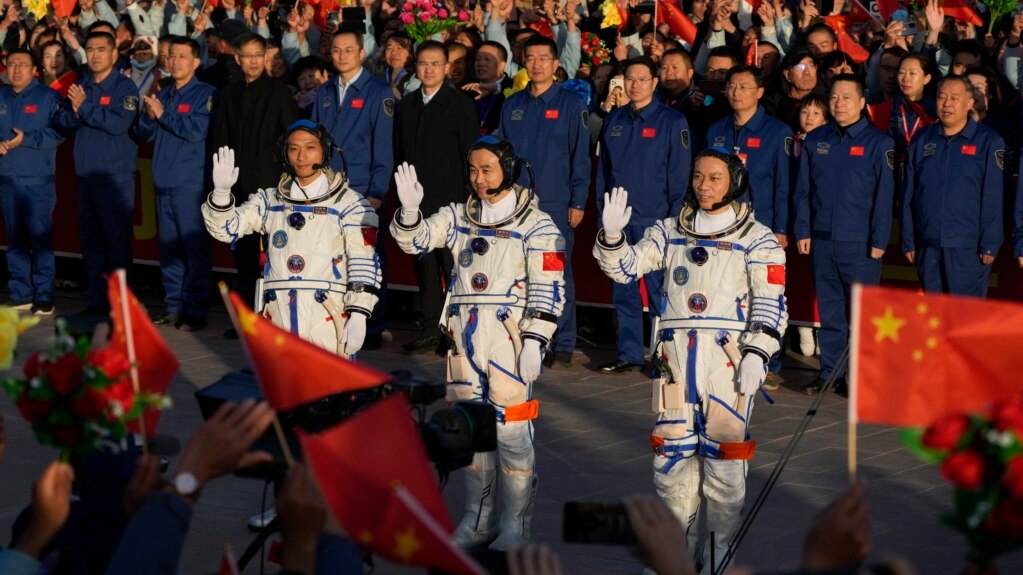China launched its youngest-ever crew for its orbiting space station Thursday. The launch is part of the country’s plan to put astronauts on the moon before 2030.
The Shenzhou 17 spacecraft lifted off from the Jiuquan Satellite Launch Center in northwestern China at 03:14 UTC. The China Manned Space Agency said the average age of the three-member crew is the youngest since the launch of the space station. Their average age is 38, state media China Daily said.
The three astronauts are Tang Hongbo, Tang Shengjie, and Jiang Xinlin. They will replace a crew that has been on the station for six months.
The new crew will perform experiments in space medicine, space technology, and other areas during their mission. And they will help to place and do possible repairs to equipment inside and outside the station, the agency said.
New space race
China also has plans to place astronauts on the moon before the end of 2030 in competition with the United States in space exploration. This follows other competition for influence between the world’s two largest economies in the technology, military, and diplomatic fields.
Earlier on Wednesday, the Chinese space agency also announced plans to send a new telescope to look deep into the universe. Chinese state broadcaster CCTV said the telescope would permit for mapping of the sky, but no timeline was given for when it would be placed.
In 2022, the Chinese government built its own space station after it was not permitted to join the U.S.-led International Space Station. The Americans worried that the Chinese space program was under the control of its military, the People’s Liberation Army.
China’s first manned space mission in 2003 made it the third country after the former Soviet Union and the U.S. to put a person into space using its own resources.
The American space program is believed to be far ahead of China at this time. But, China has made some important steps. They include bringing back samples from the moon’s surface for the first time in many years and landing a vehicle on the less explored far side of the moon.
The U.S., meanwhile, aims to put astronauts back on the moon’s surface by the end of 2025. It is aided by private American companies like SpaceX and Blue Origin.
In addition to their moon, or lunar, programs, the two countries have also separately landed vehicles on Mars. And China plans to follow the U.S. in landing a spacecraft on an asteroid.
I’m Gregory Stachel.

